In the ever-evolving space of collage, creators are constantly pushing boundaries and exploring new forms of expression. However, amidst this creative exploration, it’s crucial to understand and respect the legal framework that governs artistic endeavours. Copyright Law plays a pivotal role in protecting the rights of creators. This ensures fair compensation for their work, and maintaining a balance between artistic freedom and intellectual property rights.
The Importance of Copyright
Copyright is a significant part of creating. It is to protect artists. It bestows upon artists the exclusive rights to reproduce, distribute, and display their creations. When a new artwork is made by an artist it ensures the original maker retains control. Allowing the artist to have thwarting unauthorised reproduction or distribution.
From an economic standpoint, copyright serves as a crucial avenue for artists to derive financial benefits. Artworks are a form of investment, we use our time, skill, and valuable resources. Equally important is copyright’s role in preserving the integrity of an artist’s work, protecting against alterations or misuse. These could undermine the original artistic vision.
Protecting Creative Expression
Copyright grants artists the exclusive right to reproduce, distribute, and display their work. Protection through copyright allows creators to have control over how their art is used. It also prevents unauthorised reproduction or distribution.
Economic Considerations
Artists invest time, skill, and resources in creating their work. Copyright provides a means for them to derive financial benefits from their creations. This could be through licensing or selling their work through prints.
Maintaining Artistic Integrity
Copyright safeguards the integrity of an artist’s work. Without these protections, artists risk seeing their creations altered, distorted, or misused in ways that may compromise their artistic vision.
Legal Implications of Copyright Infringement
Unauthorised utilisation of copyrighted material carries significant financial implications. This can often culminating in legal proceedings that may result in substantial fines and damages. Artists may also face the disheartening reality of losing control over their creations due to copyright infringement.
Moreover, the widespread availability of digital collage without appropriate licensing can contribute to a devaluation of the entire market. This, in turn, presents challenges for artists in finding buyers or licensors willing to pay fair prices for the original.
Financial Consequences
Unauthorised use of copyrighted material can result in legal action, leading to hefty court bills, fines and damages. The reason why you might get sued is because artists can lose potential revenue streams. When their work is used without permission or proper licensing that can mean they are not properly paid for their work.
Loss of Control
Copyright infringement can strip artists of their control over their creations. Seeing one’s work used in ways that were not intended can be disheartening and frustrating for artists. This is why it is important to check with the original creator to see if you can use their work for your own creations.
Diminished Market Value
When digital art is readily available without proper licensing, it can lead to a devaluation of the entire market. Artists may struggle to find buyers or licensors willing to pay fair prices for their work.
Fair Use in Digital Collage
Fair use is a legal doctrine that allows the limited use of copyrighted material without permission. This is for purposes such as criticism, commentary, news reporting, teaching, scholarship, and research. However, fair use is a nuanced concept and requires a careful analysis of factors such as:
- The purpose of use.
- The nature of the copyrighted work.
- The amount used.
- The effect on the market.
United States & Fair Use
In the United States, fair use is a flexible doctrine outlined in Section 107 of the Copyright Act. Common examples of fair use include criticism, commentary, news reporting, teaching, scholarship, and research. Courts assess each case individually, and there is no strict set of rules governing fair use. It considers factors such as:
- The purpose of use.
- The nature of the copyrighted work.
- The amount used.
- The effect on the market.
A More In-Depth Look
In the United States, collage art may be protected under the fair use doctrine outlined in Section 107 of the Copyright Act. Factors considered for fair use include:
- Purpose and Character of the Use:
- Using copyrighted material for purposes such as criticism, commentary, parody, or transformative purposes is more likely to be considered fair use.
- Nature of the Copyrighted Work:
- Collages that use material that is more factual or less creative may have a better argument for fair use.
- Amount and Substantiality of the Use:
- The extent to which copyrighted material is used in the collage is a factor. Using small portions for transformative purposes is generally more likely to be deemed fair use.
- Effect on the Market:
- If the collage does not adversely affect the market for the original copyrighted work, it is more likely to be considered fair use.
Read more:
United Kingdom & Fair Dealing
In the United Kingdom, the term used is “fair dealing.” Fair dealing is outlined in Sections 29 to 30 of the Copyright, Designs, and Patents Act 1988. Similar to fair use, fair dealing is a context-specific concept. The courts consider factors like the purpose and character of the use and its effect on the market for the original work. It covers purposes such as:
- Research
- Private study
- Criticism
- Review
- News reporting
Read more:
Australia & Fair Dealing
Australia has a fair dealing system outlined in the Copyright Act 1968. Like in other jurisdictions, the fairness of the dealing is assessed on a case-by-case basis. Each case is considers factors such as:
- The purpose and character of the use.
- The nature of the copyright material.
- The amount used.
- The effect on the market.
Fair dealing covers purposes such as:
- Research or study
- Criticism or review
- Parody or satire
- Reporting news
- Professional advice
Fair Dealing (UK, Australia, et al)
In the United Kingdom and other countries with a fair dealing framework, similar principles apply. Fair dealing may cover purposes such as research, private study, criticism, review, and reporting news. For collage art, considerations might include:
- Purpose of the Use:
- Collages created for purposes such as criticism, review, or reporting news may be more likely to fall under fair dealing.
- Amount and Substantiality:
- Using a reasonable and necessary amount of copyrighted material for the intended purpose is a factor.
- Effect on the Market:
- If the use does not harm the market for the original work, it may be more likely to be considered fair dealing.
Europe & Fair Use
In Europe, there isn’t a uniform fair use doctrine like in the United States. Instead, each country has its own set of rules regarding exceptions and limitations to copyright. The European Union has sought to harmonise copyright laws among its member states, but differences still exist. Some countries have broad exemptions for educational and research purposes, while others may have more restrictive provisions.
Read more:
Different Types of Licensing
This is a basic understanding of what different licences are and how you can navigate them.
Public Domain
Works in the public domain are not protected by copyright and can be freely used by anyone. Artists may intentionally release their work into the public domain, allowing for widespread use and adaptation.
Creative Commons Licenses
Creative Commons licenses provide a flexible way for artists to grant permissions beyond the traditional “all rights reserved” model. Creators can choose from a range of licenses that suit their preferences, allowing them to balance protection with sharing.
Commercial Licensing
Artists can choose to license their work for commercial use. This grants others the right to use their creations in exchange for compensation. This allows artists to monetise their work while maintaining control over its use.
Who Owns The Copyright on a Collage
The ownership of copyright in a collage depends on various factors, including the source materials used, the nature of the collage, and the law. Here are some general principles. Do not use this as factual law, please get advice from a legal professional in your country.
Originality of the Collage
If the collage is entirely original and does not incorporate copyrighted material created by others, the creator of the collage typically owns the copyright. This assumes that the collage meets the criteria for originality and creativity.
Incorporation of Copyrighted Material
If the collage includes copyrighted material, that are not owned by the creator of the collage. The ownership of those specific elements remains with the original copyright holders.
Permission and Licensing
If the collage includes copyrighted material, obtaining permission or a license from the copyright holders is advisable to avoid infringement. In some cases, the use of copyrighted material may be allowed under fair use or fair dealing exceptions. But this depends on the specific circumstances and applicable laws.
Collaborative Collages
If multiple individuals contribute to the creation of a collage, ownership may be shared based on their respective contributions. It’s essential to have a clear agreement among collaborators regarding copyright ownership and usage rights.
Work-for-Hire
If the collage is created as part of employment or under a contractual arrangement where the work is considered a “work for hire,” the employer or the party commissioning the work may own the copyright. Please ensure your read all contracts before signing.
There is a lot more we could get into. Navigating the legal aspects of digital art requires a thorough understanding of copyright law. There are complexities such as the concept of fair use, and various licensing options.
NOTE: Please always seek legal advice from a licensed legal professional. I am not a legal professional and this is information should not be used as such. It is general knowledge to help you on your artistic journey!

